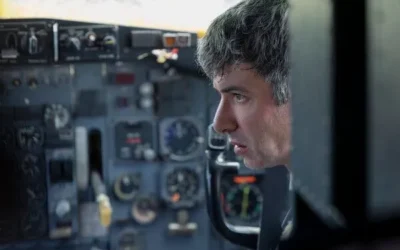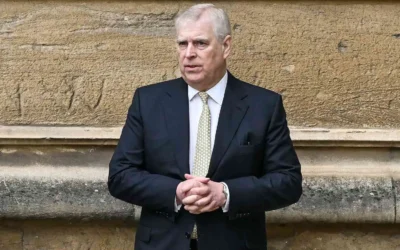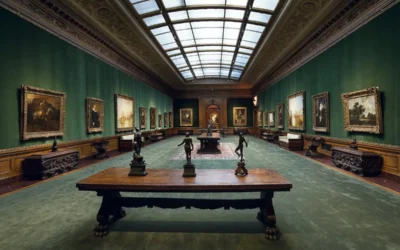The North End of the Las Vegas Strip: Can It Make a Comeback?
As yet another iconic establishment on the Las Vegas Strip closes its doors, questions abound concerning the future of this glittering stretch of real estate. Once renowned for its vibrant nightlife, extravagant shows, and legendary casinos, the North End of the Strip has experienced a slow but steady decline over recent years. The closing of a beloved hotel or casino often serves as a bellwether of changing times, sparking conversations about revitalization and renewal. Can the North end truly make a comeback?
The Decline of an Icon
Recently, the announcement of the closure of The Riviera, one of the Strip’s most recognized hotels and casinos, sent shockwaves through the local community and the millions of tourists who visit Las Vegas annually. Established in 1955, The Riviera was a glittering gem that hosted top entertainers such as Frank Sinatra and Elvis Presley. However, after several decades, the once-bustling property fell victim to changing consumer tastes, heightened competition, and an economy that left many visitors with less money to spend on entertainment.
The implications of such a closure reverberate far beyond the property itself. For one, each closing signals a shift in the overall landscape of the Las Vegas Strip. As the North End struggles to maintain its identity in the wake of rapid transformation, it raises an urgent question: how did we reach this juncture?
A History of Transition
The North end of the Las Vegas Strip, often considered to be the historical core of the area, once bustled with life and energy. The iconic lights of the Las Vegas sign lured travelers from around the nation while hotels echoed with the laughter of guests enjoying a unique blend of entertainment and gambling. However, as mega-resorts began to dominate the Strip’s landscape, the North End found itself increasingly marginalized.
With the advent of larger, more extravagant complexes such as The Bellagio, The Venetian, and Wynn, smaller hotels and casinos started to lose their allure. The focus shifted from the intimate experiences of classic Vegas to the opulence and grandeur associated with the mega-resorts. As a result, establishments like the Riviera, along with others—such as the Stardust and the Sahara—struggled to keep pace with contemporary expectations.
The Impact of Economic Fluctuations
The economic downturns have added more weight to the struggles of the North End. The 2008 recession hit Las Vegas particularly hard, causing a steep decline in tourism, eviscerating hotel revenues, and exacerbating an existing trend toward consolidation in the industry. Many smaller establishments were unable to weather the storm and were forced to close, while others were absorbed by larger casinos. This consolidation led to a lack of diversity in the offerings available to visitors, making the North End less appealing.
Moreover, the post-pandemic recovery is proving to be a double-edged sword for Las Vegas. While the city is seeing a resurgence in visitor numbers, driven by relaxed travel restrictions and pent-up demand for entertainment, tourists are seeking a different experience than what the North End has historically provided. The allure of immersive experiences and cutting-edge amenities at modern resorts casts a long shadow over older venues.
Attempts at Revitalization
Recognizing the potential loss of this iconic stretch of the Strip, local leadership and businesses are beginning to explore options for revitalization. Community developers have proposed various initiatives, ranging from artistic enhancements to expanding infrastructure. Some are advocating for the introduction of new entertainment venues, restaurants, and shops that cater to a younger audience.
The revival of events on the North Strip could help inject new energy into this area as well. Street fairs, art walks, and music festivals held throughout the year can draw residents and tourists alike, fostering a renewed sense of community. Local leaders are also highlighting the importance of history, culture, and authenticity in promoting the North End as a destination.
Challenges Ahead
Despite these hopeful steps toward revival, challenges remain. Property values along the North Strip have dropped significantly, leading to potential new owners being more invested in profits than community-building. Moreover, the zoning regulations can hinder creative projects that could otherwise breathe new life into this area.
Moreover, as mega-resorts once again invest heavily following the pandemic downturn, the competition for consumer attention will only heighten. The North End will need to find its niche and angle that resonates strongly with modern visitors who seek experiential over transactional interactions.
The Role of the Community
Community involvement will be vital in identifying and promoting what makes the North Strip unique. Residents must engage with local businesses and share their vision for a revitalized North End. Structured discussions involving stakeholders—ranging from governmental leadership to local influencers and business owners—can lead to strategies that prioritize a collective vision rather than individual profit margins.
The establishment of a cultural hub, for instance, could motivate visitors to linger longer while developing a sense of place. Integration of art and culture throughout the area could showcase local artists and musicians, reflecting the unique background of Las Vegas while appealing to tourists seeking something beyond gambling.
The Future: Hope on the Horizon?
Ultimately, the North End of the Las Vegas Strip holds the potential for a renaissance, but it requires the concerted efforts of the community, innovative vision, and a reimagining of its offerings. Embracing a more inclusive approach, highlighting authenticity, and adapting to the desires of today’s consumers are crucial first steps toward revitalization.
While significant hurdles remain, the story of the North Strip is not yet over. It stands at a crossroads, with the chance to redefine itself in the constantly evolving landscape of Las Vegas. If stakeholders embrace creative and collaborative approaches, we can only hope that the North End will again shine as a vibrant part of the Las Vegas experience.
Conclusion
As another iconic establishment closes its doors on the Las Vegas Strip, the future of the North End may seem uncertain at best. However, through strategic planning, innovation, and community involvement, the North Strip can harness its rich history and resilient spirit to forge a path toward revitalization. The undeniable allure of Las Vegas will continue to thrive, and within that narrative lies the opportunity for the North End to reclaim its place on this legendary stretch of road.







